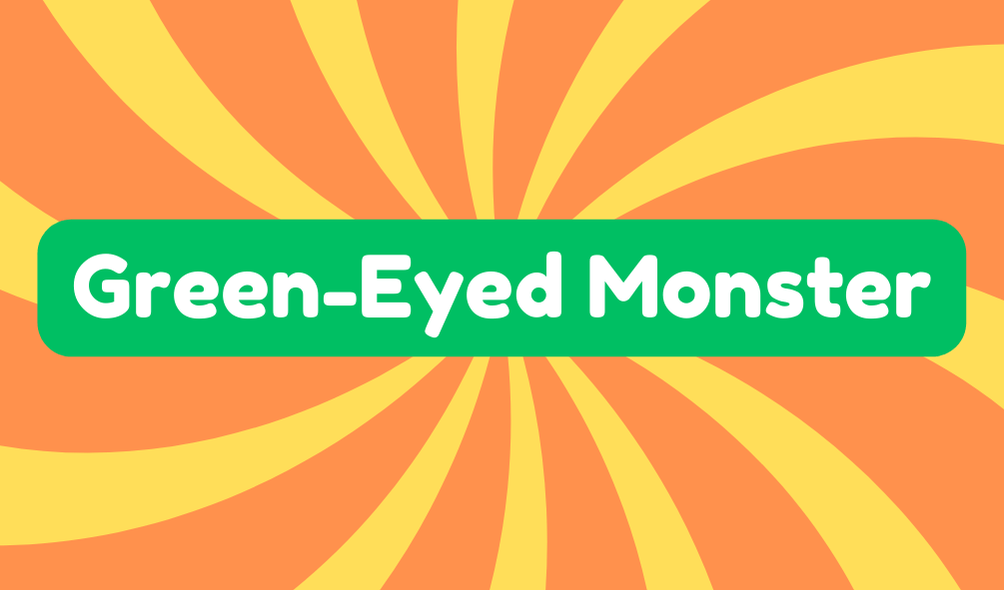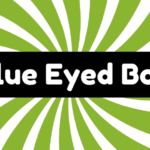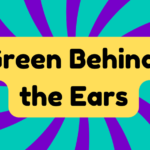The term "green-eyed monster" refers to jealousy, a complex emotion highlighted in Shakespeare's "Othello." The phrase embodies how jealousy can consume individuals and affect relationships. It originated in the early 17th century, reflecting a timeless human struggle. An example of its use could be, "Her green-eyed monster surfaced when her friend received praise." This metaphor continues to hold relevance today, especially in the context of social media, where constant comparisons may exacerbate feelings of envy. Understanding this term fosters insight into human emotions, suggesting that there is much more to explore about jealousy and its implications.
Synonyms
In the domain of human emotions, jealousy is often encapsulated by the phrase "green-eyed monster." Various synonyms exist to articulate this complex sentiment, including envy, covetousness, and resentment. Understanding these words is essential, as they illustrate the emotional reactions that arise when jealousy triggers unforeseen psychological turmoil. Identifying synonyms can lead to a more nuanced understanding of jealousy's impact on human behavior.
- Envy: a longing for what another possesses.
- Covetousness: an intense desire for someone's advantages.
- Resentment: bitterness stemming from perceived inequities.
- Grudge: lingering ill will towards another's success.
- Rivalry: competition born from jealousy-focused urges.
These terms illuminate the destructive forces at play within individuals, offering insight into the lingering shadows cast by jealous emotions.
Example of Sentences
Jealousy often manifests vividly in everyday situations, prompting individuals to confront their emotions head-on. Such feelings can lead to irrational behavior, clouding judgment and affecting relationships. Here are some poignant examples that illustrate this phenomenon:
- A student's jealousy manifestations after witnessing a peer excel academically.
- The parent who felt the green-eyed monster when their friend boasted about their child's achievements.
- Friends competing for attention during social gatherings.
- A team member's discomfort when another receives recognition for a shared project.
- The struggle of a sibling grappling with envy over an inheritance.
These scenarios serve as reminders that while jealousy is a common emotion, it can distort reality and lead to damaging actions if left unchecked.
Origin
While jealousy has long been a human emotion, the term "green-eyed monster" specifically finds its roots in literature, particularly in the works of William Shakespeare. The phrase, often associated with destructive jealousy, emerges prominently in Shakespearean influence, especially in "Othello" (1604). In this situation, jealousy is depicted as a consuming and self-destructive force, highlighting its historical relevance. Shakespeare's keen insights into human emotions articulated the perilous consequences that envy can impose, making it a timeless theme. Additionally, understanding this expression within its historical framework allows us to appreciate the complexity of jealousy that endures today. Consequently, the term serves as both a literary device and a reminder of the darker sides of human nature.
Collocations
The exploration of the term "green-eyed monster" naturally leads to its collocations, which highlight how this expression is employed in various contexts. Recognized as a powerful metaphor for jealous behavior, it underscores the emotional turmoil that jealousy induces. These collocations reveal the multifaceted nature of this term, emphasizing both its literary and everyday applications.
- Unraveling jealous behavior
- Confronting emotional turmoil
- Overcoming the green-eyed monster
- Battling with jealousy
- Recognizing green-eyed tendencies
Each of these phrases showcases how the term resonates across different scenarios. Understanding these collocations offers insight into the pervasive influence of jealousy, encouraging reflection on the often-destructive patterns that arise from our emotional struggles.
How to Use in Everyday Language
In conversations about emotions, the phrase "green-eyed monster" serves as a vivid shorthand for expressing feelings of jealousy or envy. People often encounter jealousy triggers in everyday scenarios, from social media updates to personal achievements. Using this expression can succinctly communicate complex psychological effects stemming from envy, allowing for deeper understanding of the emotional landscape. For instance, when discussing workplace dynamics, one might say, "The promotion stirred the green-eyed monster among the team." This phrase not only highlights the irrationality that jealousy can evoke but also serves as a timely reminder of self-awareness. By integrating this term into daily language, we can reflect critically on our emotions, fostering more honest dialogue about jealousy's far-reaching implications in both personal and professional relationships.
Why Is It Still Relevant Today?
As jealousy remains a fundamental human emotion, the phrase "green-eyed monster" continues to resonate in contemporary discourse. Its relevance today lies in the recognition of jealousy manifestations across various facets of life, such as social media, relationships, and professional environments. The cultural significance of this phrase reflects our ongoing struggles with self-esteem and comparison, integral aspects of modern existence. In a world driven by achievements and appearances, the green-eyed monster not only serves as a vocabulary tool but also invites critical reflection on our emotional responses. Understanding its implications can empower individuals to face these feelings constructively rather than allowing them to overpower rational thought. Ultimately, recognizing and addressing jealousy is pivotal in fostering healthier relationships and self-awareness.







